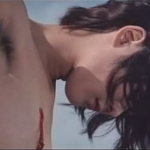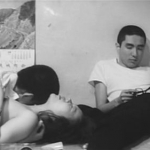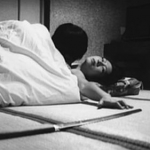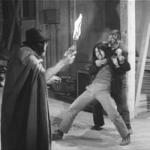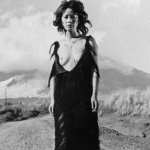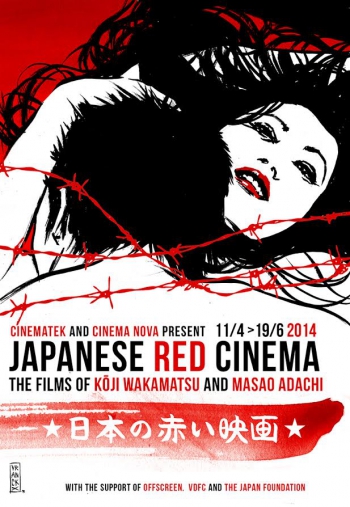Japanese Red Cinema: Koji Wakamatsu & Masao Adachi | Offscreen
JAPANESE RED CINEMA: KOJI WAKAMATSU & MASAO ADACHI
Japan in the 60’s was a place marked by violent protest movements: opposition against the post-war politics grew even more, and a new left made up of various anti-establishment groups was born. The renewal in 1960 of the Treaty of Mutual Cooperation and Security between the United States and Japan (known as Anpo) is seen by many as a new step of American neocolonialism in Japan, as well as the latter’s entrance into the imperialist mindset of the US and its ultimate transformation into a military base during the Vietnam war. This event catalyses a social struggle, and the flames of dissent are fanned once Anpo is to be extended at the end of the decade: clashes with the police and extreme right groups are rife, and armed revolutionary groups emerge to radicalise the effort.
The revolution in also present in cultural circles through a wave of artistic movements deeply rooted in the social climate which explore new territories and break free of the mould. In the film world, this meant a questioning of the rigid system put in place by the major studios. Alternatives arise and with them a new generation of filmmakers who innovated not only through socially- conscious documentaries but also in the field of erotic cinema. The combination of oftentimes violent social tension and freedom of experimentation bred a dynamic form of cinema, marked by its times but still wholly relevant today. Cinema Nova will be exploring this period through the lens of a chief figure of those movements, Masao Adachi, in conjunction with a restrospective of the works of Koji Wakamatsu at Cinematek.
MASAO ADACHI
Author, critic, theorist, screenwriter, actor and director, Masao Adachi is a freeform artist whose work has served the purpose of creative research as well as political action, which has resulted in several decades spent in hiding followed by a stint in prison. His spirit of independence and radicalism contributed to his falling off the Japanese cinema radar until recently. As the works of his contemporary Wakamatsu were internationally restored, Adachi’s name has logically resurfaced and his oeuvre finally recognised.
Adachi is a man of his times, incarnating the revolutionary avant-garde spirit of the political and artistic context that formed him. He studied cinema and directed his first movies through experimental collectives that he himself started. He also became political during the student protests and saw in the film medium a weapon of social upheaval. In 1966 he became acquainted with Wakamatsu, with whom he collaborated extensively through the years, and also took part in some of Ôshima’s films. In 1974, after having travelled through Palestine with Wakamatsu, Adachi decided to extend the film revolution into the armed revolution and left Japan in order to join the Palestinian cause as a member of the Japanese Red Army. He lived in clandestine hiding until his arrest in Beirut in 1997 and spent 18 months in prison until his extradition to Japan. He now lives in Tokyo and can never leave the country. In 2006 he directed a film inspired by his experiences and has most recently collaborated with French artist and filmmaker Eric Baudelaire.
MASAO ADACHI & KOJI WAKAMATSU
In 1966, Masao Adachi crossed paths with Kôji Wakamatsu, a young filmmaker who had already made a name for himself with his self-produced challenging erotic films, thanks to his aesthetic prowess and noteworthy productivity - at times churning out close to 10 films a year- as well as a diplomatic scandal which added a tinge of notoriety to his reputation. Adachi was drawn to the rebellious yet accessible potential of the Pink genre, through which subversion is achieved by using nudity to subtly dissimulate a larger political message. While Wakamatsu was already exploiting the concept, his collaboration with Adachi managed to deepen his political engagement. United by their unruly anti-establishment rules, Wakamatsu and Adachi complemented each other to perfection and lived the revolution in their respective manner: Wakamatsu with the idea that film was a way to "kill cops without going to prison", and Adachi deciding that there was no need to choose between a gun and a camera when you have two hands at your disposal.
Violent Virgin
A gang captures a husband and wife and plans to kill them. But first they spend a day humiliating and tormenting the couple. With its surreal and symbolic poetry, this disturbing memento mori - filmed in an abandoned field - is considered as one of the absolute highlights of Wakamatsu's work.
Sex Jack
Like many other films of the period, "Sex Jack" opens with images of anti-Anpo protests. Filmed in black and white by Wakamatsu, the film follows a defeated militant group whose hideout has been discovered by the police, resulting in the arrest of their leader. A mysterious young thief helps them escape.
The Woman who wanted to die
Years after their failed suicide attempt, a man and a woman run into each other in the inn of a small provincial town, this time both accompanied by their new partners. A reflection on suicide in Japanese society, shot a few days after the public suicide of Mishima.
Shinjuku Mad
A father goes after the killers of his son. A hallucinatory evocation of the generation gap in modern Japan: the old generation, still relying on the Meiji revolution, and the youngsters who slump into apathy, drugs and carnal pleasures.
Ecstasy of the Angels
In "Ecstasy of Angels", a revolutionary organisation (inspired by Auguste Blanqui’s "Société de saisons") is mired by internal turmoil, betrayal and ambient paranoia. "Ecstasy..." is a cocktail of revolt, sex, violence and dialectics, often simultaneously, in Wakamatsu’s incomparable style.
- ‹‹
- 3 of 3

